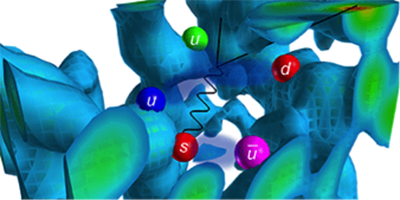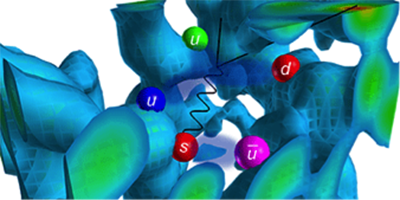Baryon’s Innards Have Molecular Structure
Graduates of Particle Physics know that baryons are made of three quarks. An excited state of the Lambda baryon, , might, however, defy this simple description: the particle behaves like a “molecule” made of a quark pair and a quark triplet. This picture, which can’t be explained by the standard quark model, has been debated for almost fifty years. Now it’s gaining new support from calculations by theorists at the University of Adelaide, Australia.
What’s puzzling about the Lambda baryon—a bound state of an up, down, and strange quark—is that much less energy is needed to excite it than expected for three bound quarks. The molecular picture explains the difference by assuming the excitation produces two compound particles: an antikaon (composed of a strange quark and an anti-up or anti-down quark) and a nucleon (a proton or neutron). This system of five quarks is more strongly bound than three bare quarks.
Theoretical calculations haven’t, however, been able to convincingly predict ’s structure because they approximated the quantum field theory that describes quarks. Derek Leinweber and his colleagues tackled the problem with lattice quantum chromodynamics, which uses supercomputers to simulate quark theory. The authors calculated the strange quark’s contribution to the magnetic moment and found it was zero—the value expected if the strange quark is bound in an antikaon in turn bound to a nucleon. The finding is a strong sign that has an antikaon-nucleon molecular structure: in other configurations, the authors say, the strange quark would have a nonzero magnetic moment.
This research is published in Physical Review Letters.
–Jessica Thomas





